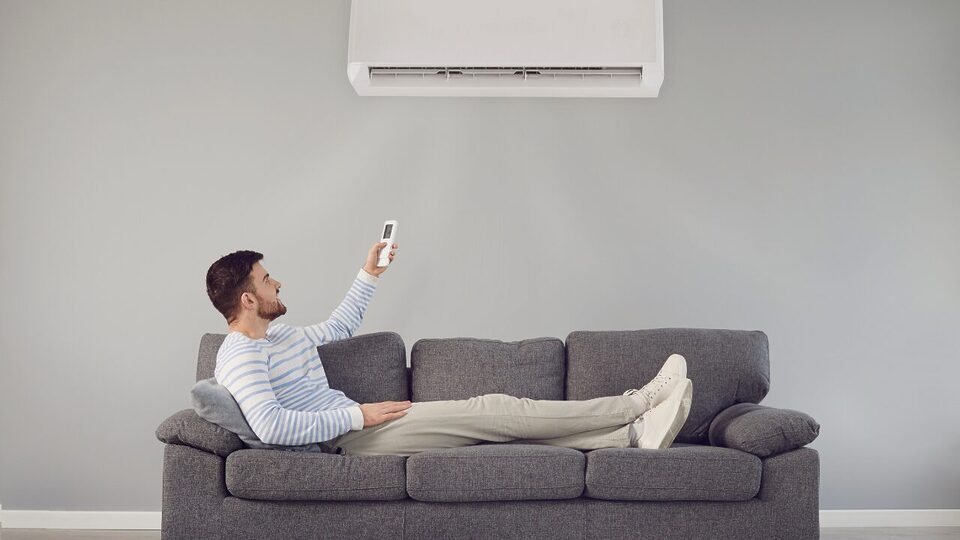Last week it was announced that the Government will expand the BUS Scheme to include grants of £2,500 for the installation of “Air-to-Air Heat Pumps”, commonly referred to as split or multi-split systems. Naturally, this has created both excitement and concern within the industry, as it potentially provides opportunities for other trades to install these products. Defending F-Gas and the years of specialist training behind it is a passionate subject for the UK HVAC sector, and while we all welcome new, skilled installers, recent history shows many poor installations by untrained personnel purchasing equipment illegally via unprofessional resellers.
Unfortunately, many press releases have created significant confusion about the scheme. Headlines such as:
“Government expands successful heat pump scheme to technology that keeps homes warm in winter and cool in summer”
“Discounts for families to keep warm in winter and cool in summer”
…are misleading and generating a wave of incorrect communication across the industry. We need better information, and we hope this article helps clarify the true intention behind adding Air-to-Air products to the BUS Scheme.
What is the BUS Scheme?
From Ofgem: The Boiler Upgrade Scheme (BUS) supports the decarbonisation of heat in buildings. It provides upfront capital grants to support the installation of heat pumps and biomass boilers in homes and non-domestic buildings in England and Wales.
Installers can apply for:
- £7,500 off an air-source heat pump
- £7,500 off a ground/water-source heat pump
- £5,000 off a biomass boiler
From the UK Government BUS Consultation: Proposed: £2,500 off the installation of an air-to-air heat pump.
The BUS Scheme helps homeowners reduce the cost of an air-to-water heat pump (and other low-carbon technologies) when replacing fossil-fuel heating such as gas, oil or old electric storage heaters.
For example, replacing a gas boiler with an A2W heat pump often involves additional costs such as radiator or pipework upgrades, pump replacements and installing a hot water cylinder. A typical installation for a 3-bed home might cost £12,000-£14,000. The BUS Grant offsets this, bringing the net cost down to £4,500-£6,500.
If a homeowner was already expecting to spend around £2,000 on a boiler replacement, the true uplift is:
- Installation: £12,000
- Less boiler replacement cost: £2,000
- Less BUS Grant: £7,500
- Net cost: £2,500
This is just one example, but the aim of BUS is consistent: encourage cleaner heating and support the UK’s transition to low-carbon systems.
Key Takeaways from the Consultation
The Government acknowledges that innovation in hybrid low-carbon systems is growing and that a standalone hydronic heat pump may not be optimal for every property. Therefore, they plan to amend BUS eligibility to allow heat pumps to be installed alongside other electric heating appliances and complementary technologies, including:
- Hot water heat pumps
- Exhaust air heat pumps
- Air-to-air heat pumps
- Heat batteries
- Electric heaters
Air-to-Air Grant Details
The Government intends to begin providing £2,500 grants for the installation of AAHPs. To be eligible:
- Systems must provide space heating (not cooling).
- Units must be MCS-certified and meet ecodesign requirements.
- AAHPs must not be paired with fossil-fuel heating.
- Non-domestic AAHP installations are excluded (mature commercial market).
- Only one grant per property.
- Applications expected to open in 2026.
Some AAHP products with integrated hot water heating will also be eligible under the £2,500 category.
What This Really Means
Despite the noise, AAHPs will not be eligible for the BUS grant in the following situations:
- Cooling-only installations
- Home offices
- One-off split systems
- Secondary heating solutions alongside gas
- Properties where no other approved electric technologies support the AAHP
Most eligible cases will be “hard-to-reach” or “hard-to-heat” homes where A2W systems are unsuitable.
For most typical UK homes, the homeowner will still be comparing a £2,500 AAHP grant vs. a £7,500 A2W grant and A2W will remain the preferred route for decarbonising space heating.
Air-to-Air should be seen as an additional option for homes where A2W is impractical, not as a subsidy for standard domestic AC installations.


